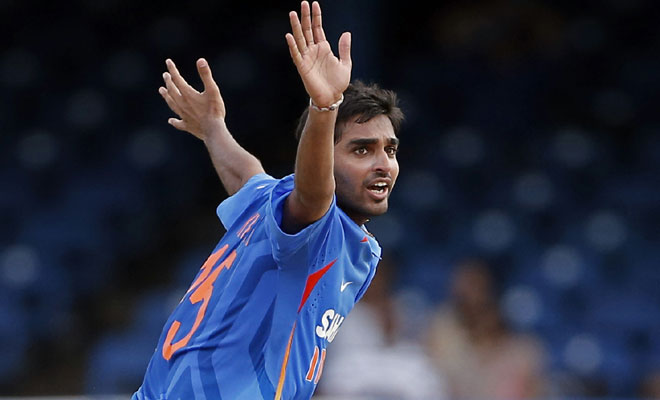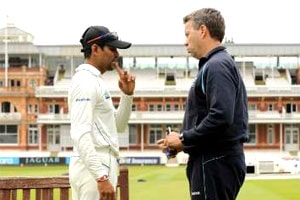Trickle-up theory: Domestic set-up to blame for Sri Lanka collapses
 Kusal Perera scored 55 on Sunday.
Kusal Perera scored 55 on Sunday.
IT was February 2014, and the England Lions had just finished a month-long tour to Sri Lanka. It was a team made up of those who would eventually go on to play for England or had already appeared in a game or two. They had won a series of first-class matches against a Sri Lanka A squad made up again of those who had already appeared for the national team and those who would eventually go on to. But Jerome Jayaratne remembers the conversation he had with Lions coaches, Graham Gooch and Mark Ramprakash, post the tour more vividly than what really transpired on the field.
“They came to me and said they had made two glaring observations about our batsmen. Firstly, that they seemed to have little idea about how to construct an innings in the longer format. That our guys had the flair but lacked the intelligence required to bat long. Secondly, and most worryingly, they seemed to keep hitting the ball in the air too often,” Jayaratne recalls. Though slightly taken aback, Sri Lanka Cricket’s Head of Coaching Unit, wasn’t too surprised by the remarks made by the two stellar former England batsmen-turned-coaches.
It wasn’t like he didn’t know about it. And there have been plenty of examples during the three Tests so far against India that back the Englishmen’s comments. Too often the Sri Lankan top-order has collapsed without a fight against an Indian bowling attack that has largely blown hot and cold. And it’s only an exceptional middle-order rearguard that has saved them the blushes on each occasion — be it Dinesh Chandimal’s 162 in Galle, Angelo Mathews’ fluent century at P Sara or Kusal Perera’s daredevilry at SSC. But as the collapse on Sunday, which had Sri Lanka on the ropes at 47/6, was a reminder for Jayaratne and the rest of the country that all’s not well with Sri Lanka’s batting resources.
“Our average domestic first innings total is 256 and for the second innings is 142. It’s shocking really. So we hardly have batsmen looking to spend time at the crease,” he says.
For long, Jayaratne, among others that include Mahela Jayawardene, has bemoaned the brittle and often lop-sided competition in Sri Lanka’s first-class structure. While it does allow batsmen and bowlers to produce notable performances, it is counter-productive in the bigger picture, as is being proved with the low averages of batsmen presently in the setup. Except for Chandimal and Mathews, there’s no Sri Lankan batsman who averages over the mid-30s.
“If your competition is tough there they will find a way there. Upul Tharanga can’t still play a proper forward defensive. You don’t know when he will get out. But he still has 15 ODI centuries. If he sticks around, he ends up getting runs,” the veteran coach explains.
“There are too many clubs playing at that level, which dilutes the competition. We look enviously at the domestic scores in India and Australia, where teams regularly score over 600 and batsmen score double-centuries for fun. So someone like Pujara knows how it’s to be done as he has experienced it,” he adds.
In 2013, Kusal Perea became the first batsman to score a triple-century in Sri Lankan domestic history, and his 336 had come off just 275 deliveries. Since, Thilina Kandamby and Kithuruwan Vithanage have bettered Perera’s effort.
Kandamby’s 340 came in 367 deliveries while Vithanage took only 283 balls to set the new record with his 351 earlier this year. So far in the series, the only time Sri Lanka have dominated with the bat is when they’ve come all guns blazing with a devil-may-care attitude. It’s a trend that isn’t new for coaches in Sri Lanka to fret over, but Jayaratne doesn’t see a way out of it.
“Our philosophy is we don’t tamper with the natural ability of a cricketer. We will always have the Kusal Peraras and the Jayasuriyas coming through. It’s very high risk. He can turn you a game single-handed. Or he will be gone before you know it.”
But it’s not only the batsmen who are struggling to come to terms with the challenges of Test cricket, feels Jayaratne. It’s the bowlers too who get affected gravely as a result of batsmen not really being keen on playing long innings. “We don’t have a bowler here who is used to bowling or has ever bowled when the score is 150/2. Fast bowler needs to bowl 50 overs in a Test match, he bowls only 10-15 in a first-class match. It’s double their usual workload. No wonder they break down so often,” he says.
“Then you have a Kaushal who is used to taking 5-6 wickets in every innings. So in Tests too, he doesn’t care who’s batting, he wants his 10 per match, and hence you see him bowl full-tosses and loose balls. He is literally learning his craft at the international level,” he says, insisting that the gap between first-class cricket and Tests is beginning to get too yawning for young Sri Lankans.
Jayaratne is expecting some change, however, with the SLC planning to create an additional tier above first-class cricket to strengthen the system. This tier will include five franchises who can pick from the top 65-70 players in the country and then play against each other at home and away.
Says Jayaratne, “Money can only buy you great infrastructure. But a strong domestic competition can build you a Test team for the future.”







